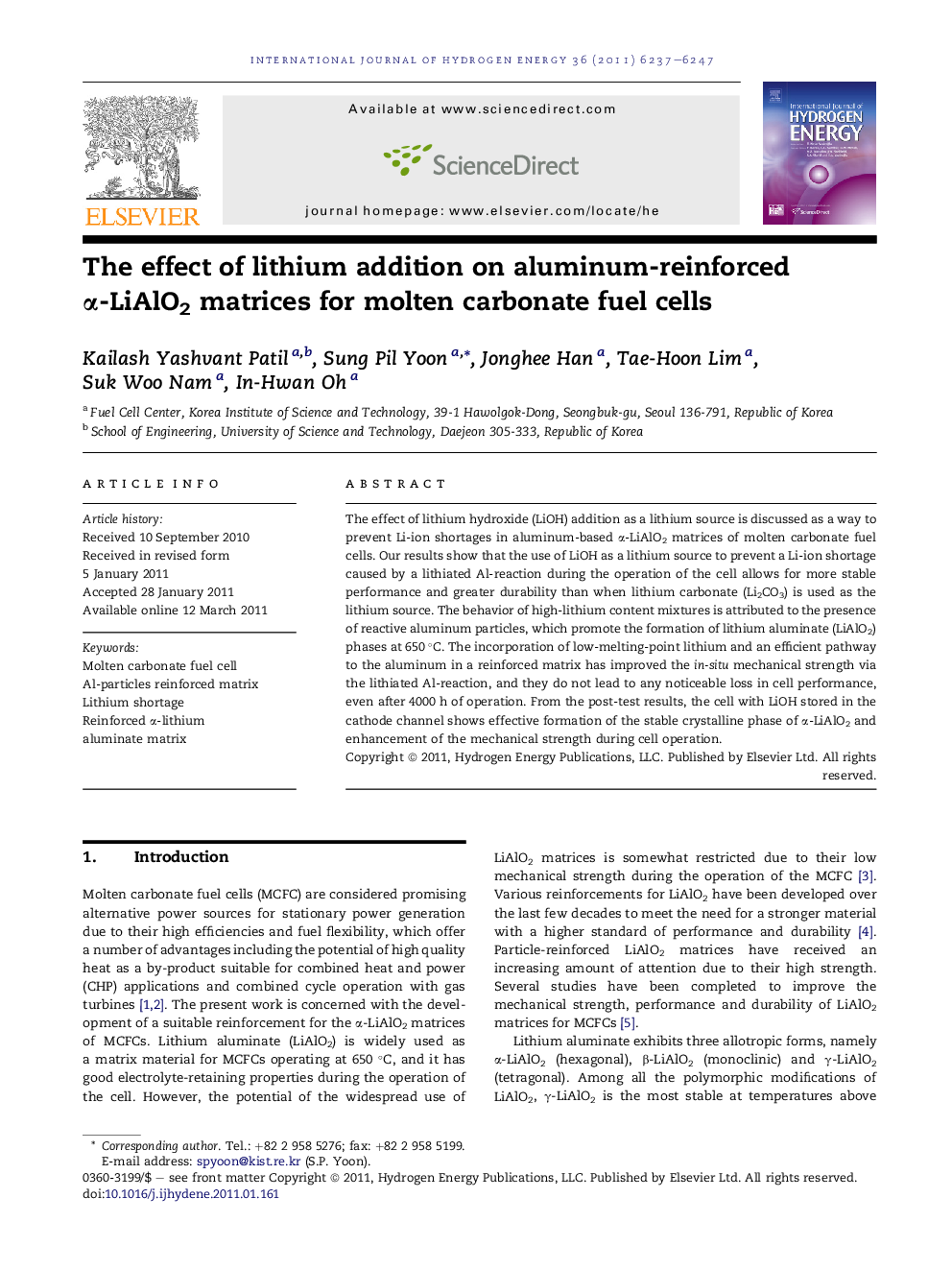| Article ID | Journal | Published Year | Pages | File Type |
|---|---|---|---|---|
| 1279554 | International Journal of Hydrogen Energy | 2011 | 11 Pages |
The effect of lithium hydroxide (LiOH) addition as a lithium source is discussed as a way to prevent Li-ion shortages in aluminum-based α-LiAlO2 matrices of molten carbonate fuel cells. Our results show that the use of LiOH as a lithium source to prevent a Li-ion shortage caused by a lithiated Al-reaction during the operation of the cell allows for more stable performance and greater durability than when lithium carbonate (Li2CO3) is used as the lithium source. The behavior of high-lithium content mixtures is attributed to the presence of reactive aluminum particles, which promote the formation of lithium aluminate (LiAlO2) phases at 650 °C. The incorporation of low-melting-point lithium and an efficient pathway to the aluminum in a reinforced matrix has improved the in-situ mechanical strength via the lithiated Al-reaction, and they do not lead to any noticeable loss in cell performance, even after 4000 h of operation. From the post-test results, the cell with LiOH stored in the cathode channel shows effective formation of the stable crystalline phase of α-LiAlO2 and enhancement of the mechanical strength during cell operation.
